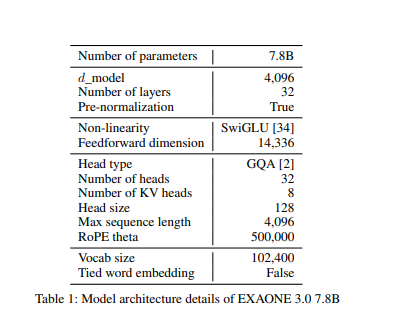LG AI Research Department released South Korea’s first open source artificial intelligence model Exaone3.0, which has 7.8 billion parameters and supports Korean and English. It aims to promote the development of the Korean AI ecosystem and compete with international open source AI models such as Alibaba Qwen and UAE Falcon. Exaone 3.0’s open source strategy aims to attract developers and enterprises to build applications on its platform, thereby promoting the widespread adoption of its AI and cloud infrastructure and bringing diversified AI and cloud service revenue to LG. This article will provide an in-depth analysis of the features, competitive advantages and impact of Exaone 3.0 on the future AI market.
Recently, LG AI Research Department announced the launch of Exaone 3.0, South Korea’s first open source artificial intelligence model. The model has 7.8 billion parameters and can perform well in Korean and English tasks. It aims to accelerate AI research and create a model for South Korea. Powerful AI ecosystem.

LG has always been known for its consumer electronics products, and this strategic transformation shows that it hopes to occupy a place in the field of AI innovation. By open source Exaone3.0, LG not only demonstrates its technical strength, but may also open up new revenue sources for cloud computing and AI services.
The release of Exaone 3.0 comes at a time when global AI competition is intensifying. Its competitors include open source AI models such as China's Alibaba's Qwen and the United Arab Emirates' Falcon. Qwen received a major update in June and currently has more than 90,000 enterprise customers and performs well on platforms such as Hugging Face, surpassing Meta's Llama3.1 and Microsoft's Phi-3. The UAE's Falcon2 claims to outperform Meta's Llama3 in multiple benchmark tests.
LG's open strategy is similar to that of Chinese companies such as Alibaba, which also promote the growth and commercialization of cloud business through open source AI. By offering a strong open source model, LG hopes to attract developers and enterprises to build applications on its platform, thereby driving widespread adoption of its AI and cloud infrastructure.
In terms of performance, LG claims that Exaone3.0’s inference time has been reduced by 56%, memory usage has been reduced by 35%, and operating costs have been reduced by 72%. These improvements are crucial in the highly competitive AI market. The model has been trained on 60 million pieces of professional data (covering patents, codes, mathematics, chemistry and other fields), and plans to expand to 100 million pieces of data within the year, demonstrating LG's determination to build a multi-functional and powerful AI system.
The success of Exaone 3.0 may change the pattern of the AI market, bring diversified AI and cloud service revenue to LG, and also allow South Korea to have a voice on the global AI stage. The popularity of open source will also make advanced AI technology more popular and promote innovation in various industries and regions.
In the coming months, the influence of Exaone 3.0 will not only be reflected in its technical specifications, but also in whether it can inspire developers, researchers and enterprises to jointly utilize its capabilities to form a prosperous ecosystem.
Paper address: https://arxiv.org/pdf/2408.03541
Highlight:
LG launched Exaone 3.0, becoming South Korea's first open source AI model and promoting the development of the national AI ecosystem.
Exaone3.0 competes with multiple open source AI models around the world, aiming to enhance its technical strength and market position.
The open source strategy will help LG expand its cloud computing business and attract developers and enterprises to use its platform.
All in all, the launch of Exaone 3.0 marks LG’s strategic layout in the field of artificial intelligence. The key to the success of its open source strategy lies in its ability to build a strong developer ecosystem and ultimately achieve commercialization goals. Future development deserves continued attention.